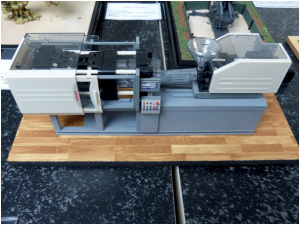This process emerged in the middle of the 19th century and rapidly gained popularity during the second world war as an efficient way to manufacture high numbers of identical items.

As one of the most popular manufacturing techniques, injection moulding involves inserting a material into a mould made of rubber.
What is it used for?
Rubber injection moulding is typically used for commercial purposes and has endless uses, ranging from creating extremely small parts to entire car frames.
Where can you find examples in everyday life?
A quick glance around your home or office will lead you to identify many products made using this technique. Used to manufacture large numbers of everyday objects, typical products include drink bottle caps, children’s toys, and even some musical instruments!
Understanding the manufacturing process
So what is the process for rubber injection moulding? Using a screw feeder with the specified and desired number of components, rubber is moved into the system and heated up. The temperature of the rubber is maintained to enable it to turn into a solid. When the heated rubber is entirely solid, the finished mould can be removed.
Thermoplastics are usually the material of choice. They are recyclable and become soft easily. Most moulds are made out of metal, most commonly steel.

Benefits
Due to its rapid speed and high efficiency, it is one of the most common techniques in today’s manufacturing world. Both complex and simple items can be produced at scale and at little cost. As one of the most useful industrial techniques, it has very low labour costs and enables many different materials to be utilised simultaneously with ease. With excellent and reliable consistency and sufficient control over the colour of items, this is a useful manufacturing technique for both small and large businesses
Disadvantages
Due to the cost of the equipment, this process can initially be very expensive to establish and equally expensive to close down! It is best suited to large-scale manufacturing operations.
To save money and use your budget wisely, it is useful to consider the size of your parts. Are they cost-effective? By reusing moulds, your business could save money. If your budget is tight, eliminating unnecessary features on your mould can also make your money go further.







